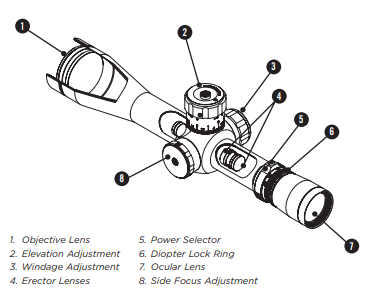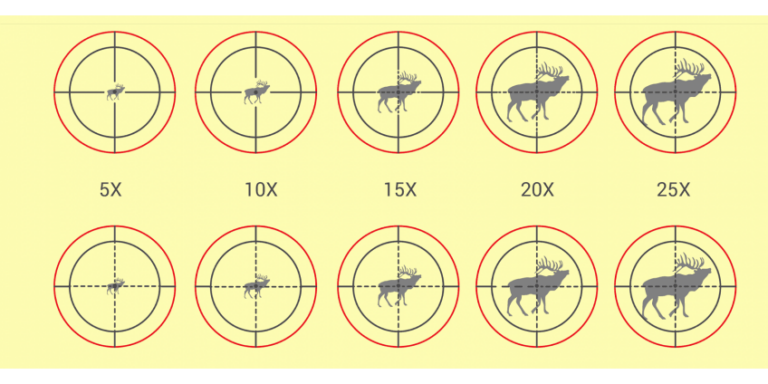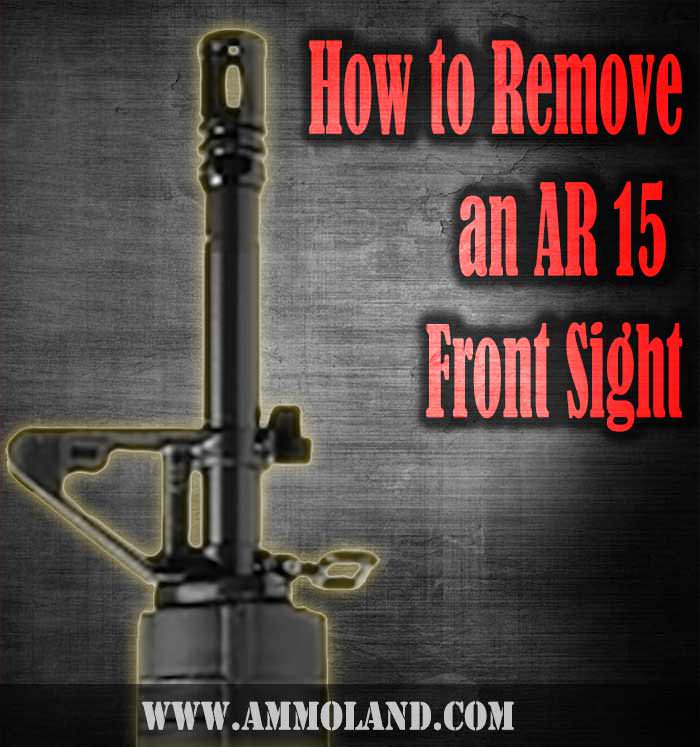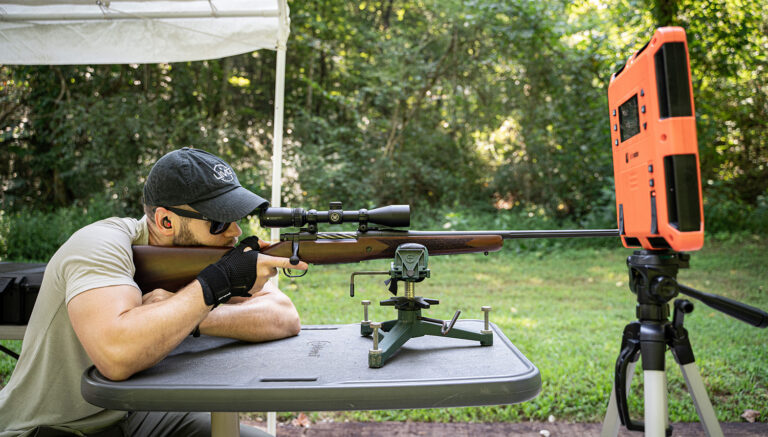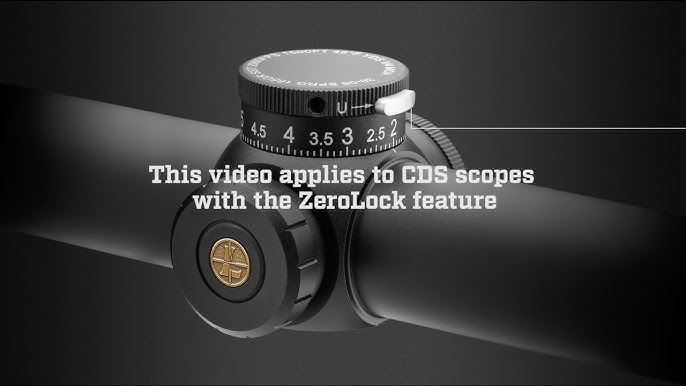How To Sight In A Leupold Scope: Ultimate Precision Guide
Sighting in a Leupold scope is crucial for accurate shooting. It ensures your shots hit the target consistently.
A properly sighted scope can make a significant difference in your shooting experience. Whether you are a novice or a seasoned shooter, knowing how to sight in your Leupold scope can improve accuracy. This process involves aligning the scope with the firearm and fine-tuning adjustments.
Understanding the basics can save you time and enhance your shooting skills. This guide will walk you through the steps, making the process simple and effective. Get ready to take your shooting precision to the next level by mastering the art of sighting in your Leupold scope.

Credit: www.youtube.com
Choosing The Right Equipment
Choosing the Right Equipment is crucial for sighting in a Leupold scope. The right tools and ammunition will ensure accuracy and precision. Let’s break down the necessary components.
Necessary Tools
Before starting, gather the necessary tools. These will make the process smoother and more efficient:
- Leupold Scope – Make sure it’s securely mounted.
- Rifle – Ensure it’s clean and in good condition.
- Rifle Rest or Bipod – Provides stability while sighting.
- Torx Wrench – For adjusting scope mounts.
- Target – A clear, visible target at the desired distance.
- Rangefinder – To measure the distance accurately.
- Spotting Scope or Binoculars – Helps in seeing the target clearly.
- Small Screwdriver – For making fine adjustments on the scope.
Selecting Ammunition
Selecting ammunition that matches your rifle and scope is vital. Different types of bullets can affect the sighting process.
| Type of Ammunition | Characteristics |
|---|---|
| Full Metal Jacket (FMJ) | Common for target practice. Provides consistent performance. |
| Hollow Point | Expands on impact. Good for hunting. |
| Ballistic Tip | Combines accuracy with effective expansion. Ideal for long-range shooting. |
Choose the ammunition that suits your purpose. Consistency is key. Stick with the same type during the sighting process.
Mounting The Scope
Mounting your Leupold scope correctly is crucial. It lays the foundation for accurate shooting. A poorly mounted scope can lead to poor performance. Follow these steps to ensure your scope is mounted properly and securely.
Proper Mounting Techniques
Begin by choosing the right mounting rings. Ensure they match the scope tube diameter. Attach the rings to the base, but don’t tighten them completely yet. Place the scope in the rings, adjusting it until it sits comfortably. Ensure the reticle is level.
Next, tighten the screws gradually. Alternate between screws to keep the pressure even. This helps avoid misalignment. Use a torque wrench for precision. Refer to the manufacturer’s torque specifications. Over-tightening can damage the scope.
Ensuring Stability
After mounting the scope, check for stability. Gently shake the rifle to ensure the scope doesn’t move. A stable scope is vital for accuracy. If there’s any movement, recheck the screws and retighten them.
Finally, verify the eye relief. This is the distance between your eye and the scope. Ensure you have a clear, full view through the scope. Adjust the scope position if needed. Proper eye relief prevents injury from recoil.
Setting Up The Shooting Range
Before sighting in your Leupold scope, set up your shooting range properly. A well-prepared range ensures accurate and safe shooting. Follow these steps for a successful setup.
Ideal Range Distance
Choose the right distance for your shooting range. Most experts recommend starting at 25 yards. This distance helps you get on paper quickly. Once you are on target, move to 100 yards for fine-tuning.
Safety Precautions
Safety should be your top priority. Ensure a clear, safe shooting area. Make sure there are no people, animals, or obstacles in the shooting line. Use proper eye and ear protection.
Set up a sturdy shooting bench. A stable platform improves accuracy. Place sandbags or a rifle rest on the bench. This will help keep your rifle steady.
Initial Bore Sighting
Sighting in a Leupold scope starts with initial bore sighting. This step ensures your shots align closely with your target. It saves time and ammunition by providing a good starting point. Here’s how to do it effectively.
Aligning The Bore
To begin, place your rifle on a stable surface. A gun vise or sandbags work well. Remove the bolt from the rifle. Look through the bore and center the target in your view. This process is called aligning the bore.
Next, adjust the rifle so the target is centered through the bore. Ensure the rifle remains steady. You may need to make minor adjustments to keep it in place.
Making Initial Adjustments
Once the bore is aligned, it’s time to adjust the scope. Look through the scope and check where the reticle is pointing. Use the windage and elevation knobs to bring the reticle close to the target’s center.
- Windage Knob: Adjusts the left-right position of the reticle.
- Elevation Knob: Adjusts the up-down position of the reticle.
Make small adjustments and recheck through the bore after each change. This ensures accuracy. When the reticle is close to the target center, you’re ready for finer adjustments at the range.
Adjusting Windage And Elevation
Adjusting windage and elevation on a Leupold scope is crucial. It ensures your aim is accurate. Proper adjustments help you hit your target consistently. This guide will break down the steps. It will make the process easy and clear.
Understanding Windage
Windage adjustments move the reticle left or right. This compensates for wind or other factors. Start by firing a group of shots. Note where they land. If they are to the left, adjust the knob to the right. If they are to the right, adjust to the left. Each click moves the reticle slightly. Repeat until your shots are centered.
Fine-tuning Elevation
Elevation adjustments move the reticle up or down. This compensates for bullet drop over distance. Fire a group of shots. Note if they are high or low. If they are high, turn the knob down. If they are low, turn the knob up. Each click adjusts the reticle a small amount. Repeat until your shots are on target.
Performing Test Shots
Once you have mounted your Leupold scope, the next step is to perform test shots. This is crucial to ensure your scope is accurately aligned with your target. Taking careful test shots will help you understand the adjustments needed for precise aiming.
Analyzing Shot Groups
After firing a series of shots, examine the shot group on your target. Shot groups are clusters of bullet impacts that show where your shots are landing. Use a target with a clear bullseye to make this easier.
Create a table to record your shot placements for better analysis:
| Shot Number | Horizontal Deviation (inches) | Vertical Deviation (inches) |
|---|---|---|
| 1 | 2.5 | 1.0 |
| 2 | 2.0 | 1.5 |
| 3 | 2.2 | 1.3 |
Identify the average deviation from the bullseye. This helps determine how much correction is needed.
Making Corrections
Once you have analyzed your shot group, it’s time to make corrections. Begin by adjusting the windage and elevation dials on your scope. These dials move the reticle left, right, up, or down.
- For horizontal adjustments, use the windage dial.
- For vertical adjustments, use the elevation dial.
Here is a simple adjustment guide:
- Locate the windage and elevation dials.
- Turn the dials based on your shot group analysis.
- Fire another test shot to check the new impact point.
- Repeat until your shots consistently hit the bullseye.
Use small, incremental adjustments. Record each change for reference.
Following this process ensures your Leupold scope is accurately sighted in. This will greatly improve your shooting accuracy.
Finalizing The Zero
Finalizing the zero on your Leupold scope is crucial. This step ensures that your shots hit the target accurately. Let’s break down the process into simple steps.
Confirming Accuracy
Once you have adjusted your scope, it’s time to confirm accuracy. Set up a target at your desired distance. Fire three shots at the bullseye. Check where the shots land. This will show if further adjustments are needed.
If the shots are off-center, make small adjustments. Use the scope’s windage and elevation dials. Move the point of impact closer to the bullseye. Repeat the process until all shots hit the target center.
| Adjustment | Result |
|---|---|
| Windage | Left or right movement |
| Elevation | Up or down movement |
Maintaining Consistency
Consistency is key to an accurate zero. Ensure your shooting stance is steady. Use a stable shooting rest or sandbags. This minimizes movement and improves accuracy.
Check your breathing. Take a deep breath, exhale halfway, and then fire. This reduces movement caused by breathing.
Follow these steps to maintain consistency:
- Use a stable rest.
- Control your breathing.
- Fire in groups of three shots.
- Check and adjust as needed.
Consistency in practice leads to better accuracy. Your Leupold scope will be perfectly zeroed.

Credit: www.leupold.com
Maintenance And Care
Maintaining and caring for your Leupold scope is essential. It ensures accuracy and longevity. Proper care also helps to avoid issues during your shooting sessions. Below are key aspects of maintenance and care.
Cleaning The Scope
Regular cleaning is important. A clean scope ensures clear vision and accurate targeting. Follow these steps to clean your scope:
- Use a soft brush to remove dust and dirt.
- Apply a lens cleaner to a microfiber cloth.
- Gently wipe the lenses in a circular motion.
- Use a dry cloth to remove any excess cleaner.
Avoid using paper products. They can scratch the lenses. Store the scope in a dry place. This prevents moisture buildup.
Regular Inspections
Regularly inspecting your scope is necessary. It helps to identify potential issues early. Follow this inspection checklist:
- Check the mounting system. Ensure it is tight and secure.
- Inspect the lenses for scratches or cracks.
- Examine the turrets. Make sure they move smoothly.
- Look for any signs of rust or corrosion.
If you find any issues, address them immediately. This prevents further damage.
By following these care and maintenance steps, your Leupold scope will remain in top condition. Happy shooting!
Troubleshooting Common Issues
Even with the best scopes, you may encounter some issues. Troubleshooting these can help you get the most out of your Leupold scope. This section will cover common problems and how to fix them.
Handling Recoil Problems
Recoil can affect the accuracy of your scope. High recoil can shift your scope, making it hard to stay zeroed in. Here’s how to handle it:
- Tighten Mounting Screws: Ensure all screws are tight. Loose screws can cause shifts.
- Use Quality Mounts: Invest in strong, high-quality mounts. They hold the scope better.
- Check Scope Alignment: Make sure the scope is perfectly aligned with the rifle.
Dealing With Parallax Errors
Parallax errors can lead to missed targets. Parallax occurs when the reticle appears to move when you shift your eye. To deal with this:
- Adjust the Parallax Knob: Most Leupold scopes have a parallax adjustment knob. Use it to set the correct distance.
- Center Your Eye: Always center your eye behind the scope. This reduces parallax.
- Practice Consistent Eye Position: Keep your eye in the same place every time you shoot.
Fixing these common issues will help you sight in your Leupold scope more accurately. Proper troubleshooting can make a big difference in your shooting performance.

Credit: www.youtube.com
Frequently Asked Questions
How Do I Sight In A Leupold Scope?
To sight in a Leupold scope, first mount it properly. Then, adjust the windage and elevation. Use a stable shooting position to ensure accuracy.
What Distance Should I Sight In My Scope?
Typically, sighting in at 100 yards is recommended. This distance ensures accuracy for most hunting and shooting scenarios.
How Can I Adjust The Windage On My Leupold Scope?
Adjust the windage by turning the windage dial. Move it in the direction you want the bullet impact to shift.
What Tools Do I Need To Sight In A Scope?
You need a stable shooting rest, a target, and a tool to adjust the scope’s turrets. A bore sighter can also help.
Conclusion
Sighting in a Leupold scope can be straightforward with the right steps. Follow the outlined method closely. Practice regularly to improve your accuracy. Ensure your scope is mounted correctly. Check alignment and make necessary adjustments. Take your time at the range.
Consistency is key to better shooting. Enjoy the process and stay patient. Happy shooting!

